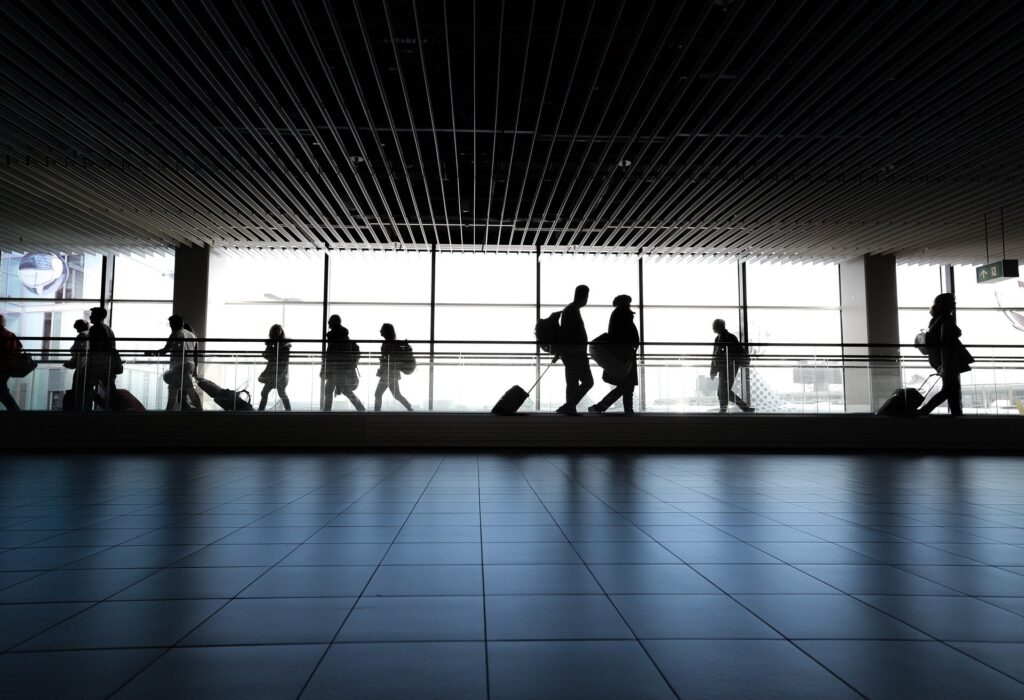Given the rapid advance of technologies at almost every touchpoint, predicting the airport of the future is more challenging than ever. However, political pressure, environmental concerns and passenger expectations are the three major factors that will undoubtedly shape the present and future of airport passenger security.
According to Allied Market Research, the global airport passenger security market is expected to witness significant growth from 2020 to 2030, spurred by the increased threat of terror attacks on public transport and advancements in technologies.
The smart airport has already gained the attention of the public and the increased penetration of smartphones and tablets has facilitated smart airport processing and parking, among other services. The rapid digitalization and transformation of airport IT and security services will only increase in the coming years. Here are some of the major technological trends in the airport passenger security industry that we can expect to roll out and advance in the future.
Shoe scanner – This is a cutting-edge, soon-to-be-rolled-out technology that uses millimeter-wave imaging systems for shoes. Passengers no longer need to take off their shoes at checkpoints and the lines for security checking will be much shorter with this technology. The conventional shoe scanners are only metal detectors and cannot check for illicit drugs and other contraband. However, the millimeter-wave shoe scanners can not only detect weapons, compounds and explosives but also scan for electronics concealed in shoes and footwear. If the scanner detects something suspicious, the passenger will have to go through a physical examination. This technology can be installed at the ticket counter where passengers check their baggage.
Multiple screening posts – The threat of terrorism has increased over the last few years. Thus, airports of the future will have multiple layers of security screening aside from the main checkpoint. These layers can be located at passenger drop-off, airport parking lots and walkways that lead to departure and ticket kiosks. As there will be more layers of security, it is easier to detect threats and the final security check will be a lot faster than it is now.
Integration of artificial intelligence – Many of the cameras installed in airports today have human factors involved in them. However, monitoring passengers through the eyes of artificial intelligence (AI) will make airports a lot safer. Next-generation security devices that have AI integrated with them will include radar, millimeter-wave imaging and chemical trace sensors. This will help detect suspicious activity well outside the airport gates and create a safer environment for passengers.
Automation in airport security systems – The integration of automation has already taken place in airport security with self-service kiosks and online check-in for airlines. With the advent of these automated devices, staffed check-in desks are being phased out. It will save a lot of time and passengers’ money in the long run as airports will need fewer staff, which may reduce the airline fare. Apart from this, the use of smartphones will encourage self-automation. Notification about change of flight time, boarding time, delay or cancellation of flights sent to smartphones is one example of automation that has already become reality.
Installation of biometric technology – Biometrics can truly improve the security of airports. Biometric and blockchain security systems installed at the entrance and exit can check passengers’ boarding passes, verify their ID and save a lot of time in the final security check. The integration of biometrics has already been rolled out in some airports by US Customs and Border Protection for immigration.
Apart from the above-mentioned trends, the integration of facial recognition systems, advanced systems to cut down false alarms and creating airports with similar infrastructure for passenger convenience will also help improve security.
Tightening security gaps has always been a challenging task. Many of the existing security checks are manual and take hours during holidays and weekends. On the other hand, the integration of new technologies will not only improve the overall security but also minimize the hassle that passengers have to go through.
To learn more about how to order Allied Market’s report on airport passenger security, click here.

